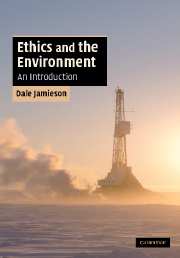7 - Nature's future
Published online by Cambridge University Press: 05 June 2012
Summary
Travails of the biosphere
Nature is in trouble: biodiversity is under siege, the climate is changing, and the ozone hole has not yet healed. The quality of human life is at risk from new infectious diseases, from pollution of air, food, and water, and from the loss of wildness and connection to nature.
While many people are aware of some or all of these problems, there is a tendency to see them in isolation. Environmental science texts give long lists of maladies, as if each entry were the name of a separate plague that is befalling us. Environmental organizations often specialize in a single issue while ignoring its neighbors. Government officials charged with protecting the environment issue reports and commission studies instead of writing regulations and enforcing laws, while their colleagues in other agencies do everything they can to encourage drilling and digging, as if these activities had no environmental consequences. Even the newspaper reinforces this separation among environmental problems and between environmental and other human concerns. While the science section tells us that fossilfuel- driven climate change threatens both nature and human societies, the business section treats modest increases in the price of oil as if they were the catastrophes. Meanwhile the opinion sections opine about the political fall out of climate change or higher oil prices, rather than educating us about how we should act as citizens. In such social and political circumstances, it is no wonder that it is difficult for us to think clearly about nature's future.
- Type
- Chapter
- Information
- Ethics and the EnvironmentAn Introduction, pp. 181 - 205Publisher: Cambridge University PressPrint publication year: 2008

